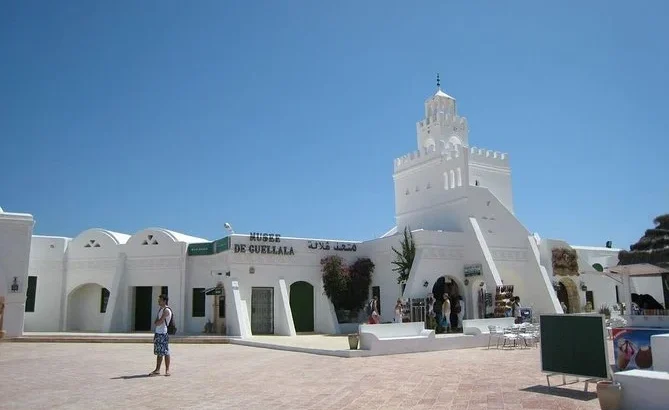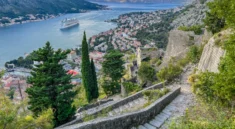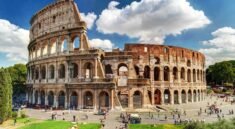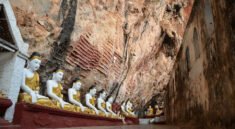
Tucked away off Tunisia’s southeastern coast, Djerba is more than just an island in the Mediterranean—it is a mosaic of cultures, a living archive of Berber traditions, and a place where the Arab and African worlds converge in harmonious rhythm. Known for its whitewashed architecture, palm-fringed beaches, and labyrinthine souks, Djerba defies the typical Mediterranean island experience. It is both restful and riveting, tranquil yet brimming with stories spanning millennia.
While many travelers visit for sun and sea, those who delve deeper quickly discover that Djerba is a cultural crossroads—a place where Berber roots run deep, Jewish and Muslim histories intertwine, and the island’s traditions are infused with African, Andalusian, and Ottoman flavors.
A Gentle Arrival: The First Glimpse of Island Life
Landing in Djerba-Zarzis International Airport, you are immediately embraced by warmth—both from the Mediterranean climate and the soft, welcoming demeanor of the locals. The island is relatively flat, dotted with olive trees and date palms, with white domed buildings peeking through the foliage like scattered pearls.
Unlike Tunisia’s bustling mainland cities, Djerba moves at a different pace. Time seems to loosen its grip here. Donkeys still pull carts through village lanes. Elderly men in traditional jebbas sip mint tea under the shade of fig trees. The smell of fresh bread wafts from communal ovens as women chat in Darija and Berber dialects, their gold earrings and embroidered scarves a reflection of ancestral pride.
Whitewashed Villages and Timeless Architecture
The heart of Djerba lies in its villages, where whitewashed homes with flat roofs and blue doors create a calming visual language—simplicity rooted in climate adaptation and cultural identity. The architectural style is not just aesthetic; it’s practical. Homes are designed to stay cool during scorching summers and cozy during the brief winters.
Perhaps the most iconic example of Djerban architecture is the “Menzel”—a traditional family compound with inward-facing rooms around a courtyard, often surrounded by orchards or gardens. These structures reflect the island’s emphasis on community, privacy, and self-sufficiency.
Wandering through the villages of Erriadh, Guellala, or Sedouikech, visitors will find themselves immersed in centuries-old rhythms. Pottery drying in courtyards. Goat herders passing by on foot. Children playing soccer in dusty alleyways, their laughter echoing through narrow streets.
Berber Heritage: The Island’s Ancestral Core
Djerba’s soul is Berber. Long before Arab, Ottoman, or French influences touched the island, the indigenous Amazigh (Berber) people called this place home. Their legacy is etched into the language, art, textiles, and spiritual practices of the island.
One of the most profound ways to experience Berber heritage is through the art of storytelling and oral history. In Djerba, elders still recount tales of resistance and migration, of how the Berbers adapted to coastal life while retaining their desert soul.
The town of Guellala is considered the cultural capital of Djerba. It is renowned for its pottery, a tradition passed down for generations. Using local clay and hand-built kilns, artisans create everything from amphoras to olive oil jars, often decorated with Berber symbols and motifs. The Guellala Museum showcases this rich heritage with reconstructions of traditional homes, crafts, clothing, and musical instruments.
Berber customs also shine during weddings and festivals, where music, henna, ornate jewelry, and dance play central roles. You’ll often see women wearing silver fibulae, colorful layered dresses, and embroidered headscarves that reflect both function and ancestral pride.
A Unique Cultural Blend: Where Africa Meets Arabia
What makes Djerba so enchanting is its seamless blend of African and Arab influences. Due to its strategic location along ancient trade routes, the island has absorbed cultural threads from Saharan traders, Andalusian exiles, Ottoman rulers, and European colonizers, all while preserving its core identity.
The result? A melting pot unlike anywhere else in the Mediterranean. Mosques with square minarets sit beside synagogues with palm-shaded courtyards. The island’s music blends Berber drums with Arabic melodies and African rhythms. Couscous is cooked with fish, olives, and local spices, while brik (stuffed pastry) and mechoui (roast lamb) reflect both Arab and North African culinary traditions.
Language also illustrates this fusion: locals speak a mix of Arabic, Berber, and French, often in the same sentence. This linguistic hybridity is a window into the island’s layered past.
Religious Harmony: The Synagogue of El Ghriba
Djerba is not only known for its Muslim heritage but also as a historic center of Jewish life. The island is home to one of the oldest synagogues in the world—El Ghriba, located in the village of Erriadh. According to legend, it was founded by Jewish exiles following the destruction of Solomon’s Temple in Jerusalem.
El Ghriba is more than a place of worship—it’s a symbol of religious coexistence and spiritual continuity. Each year, Jewish pilgrims from around the world visit the synagogue for Lag BaOmer, a festival that blends solemnity with celebration. Muslims and Jews have lived side by side on the island for centuries, and Djerba stands as a rare example of interfaith tolerance in a region often defined by division.
Inside the synagogue, intricate tilework, oil lamps, and ancient Torah scrolls tell a story of diaspora and devotion. Visitors of all faiths are welcomed with open arms, as long as they respect the sacredness of the space.
Markets, Crafts, and Island Life
No trip to Djerba is complete without a visit to its markets, especially in Houmt Souk, the island’s main town. Here, vibrant stalls overflow with spices, handwoven rugs, silver jewelry, leather goods, and ceramics. The market is a sensory feast: the aroma of cumin and coriander, the flash of hand-painted pottery, and the calls of merchants haggling in three languages at once.
Djerban crafts are both beautiful and functional. The island is famous for woven blankets, palm-fiber baskets, traditional leather slippers (babouches), and embroidered tunics. Buying these directly from artisans supports local economies and helps keep endangered crafts alive.
Markets are also places of social life—where people gather to exchange news, drink coffee, and share stories. To truly understand Djerba, spend time in its souks, not just to shop, but to connect.
Nature and Tranquility: Beaches, Palm Groves, and Flamingos
Though rich in culture, Djerba is equally gifted in natural beauty. Its coastline stretches for over 125 kilometers, with beaches ranging from bustling resort strips to quiet, secluded coves.
The northern beaches near Sidi Mahres are ideal for sunbathing and swimming, while the south offers windsurfing, sailing, and kitesurfing opportunities. For those seeking peace, Seguia Beach is a lesser-known spot with powdery sands and turquoise water—perfect for a serene escape.
Inland, Djerba is dotted with palm groves, olive farms, and lagoon ecosystems. One of the island’s natural highlights is the Flamingo Island, reachable by boat. During winter, thousands of pink flamingos gather here, feeding and nesting in shallow waters—a photographer’s dream and a biologist’s delight.
Culinary Experience: A Taste of Djerba
Djerban cuisine reflects its multicultural makeup. Expect bold flavors, generous use of spices, and fresh local ingredients. Seafood plays a central role, with dishes like grilled octopus, fish couscous, and spicy harissa-based sauces.
A must-try is Ojja, a dish of eggs poached in a spicy tomato and pepper sauce, often served with Merguez sausage. Another favorite is Rouz Jerbi, a layered rice dish steamed in banana leaves, packed with vegetables, spices, and meat or fish.
Meals are often shared, and hospitality is sacred. Don’t be surprised if you’re invited to join a family for dinner—especially during Ramadan or festivals—where you’ll be treated not as a tourist, but as a guest.
Festivals and Folklore: Living Traditions
Throughout the year, Djerba hosts a number of local festivals, many tied to Islamic holidays, Jewish pilgrimages, or seasonal cycles. Music, dance, and poetry are integral to these events.
One of the most colorful is the Festival of Ulysses, celebrating the island’s mythical connection to Homer’s Odyssey. It includes theater, art installations, and performances that highlight Djerba’s cultural richness.
Folklore is alive in bedtime stories, superstitions, and traditional songs passed through generations. Many of these tales revolve around desert spirits, heroic ancestors, and the island’s protective saints, known as marabouts, whose shrines dot the landscape.
A Place That Stays With You
To discover Djerba is to uncover a world layered with memory, artistry, and gentle resistance to modern homogenization. It’s a place where tradition meets resilience, where every alley, dish, and smile offers insight into a culture that refuses to be forgotten.
Whether you come for the beaches, the crafts, the faith, or the food, Djerba gives you something deeper: a sense of place. It doesn’t shout for attention; it whispers its stories through textures, tastes, and time.
For the mindful traveler, Djerba is not just a destination—it is a revelation.



